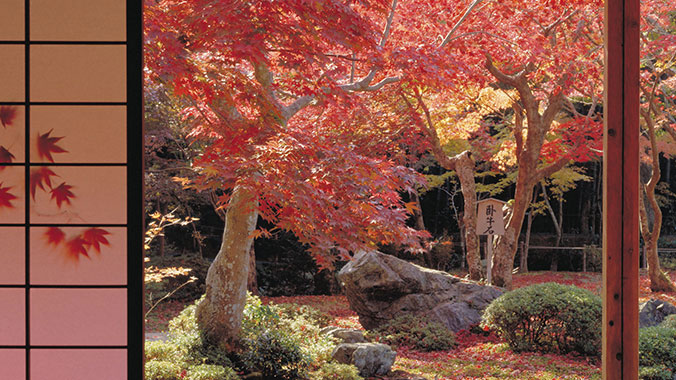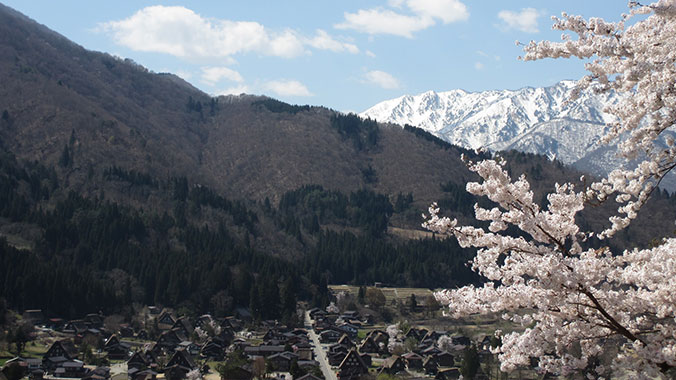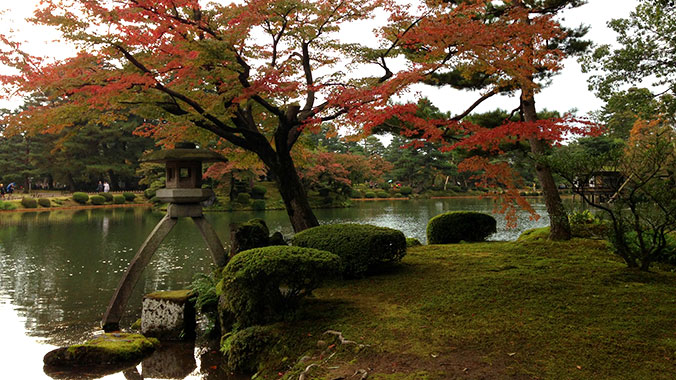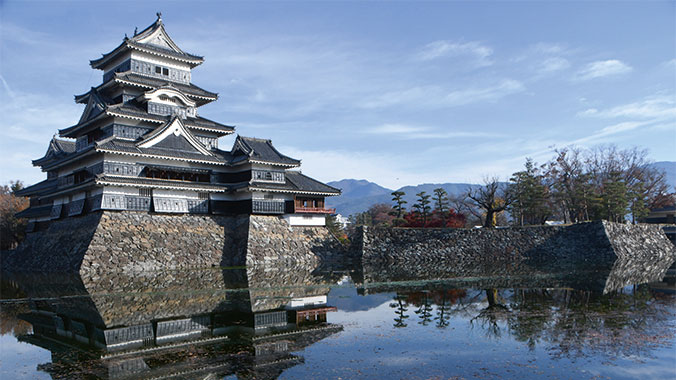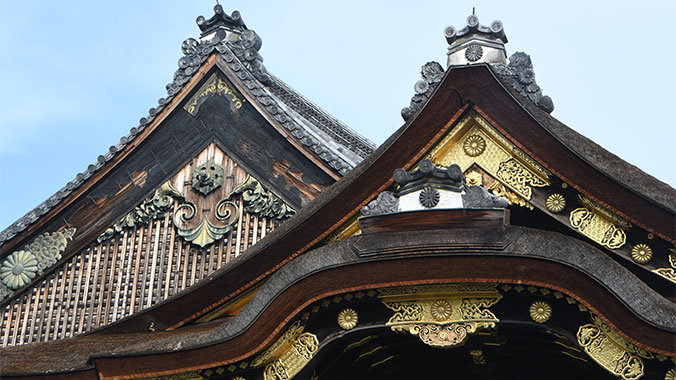Japan
The Cultural Highlights of Japan
Program No. 19725RJ
Take the adventure of a lifetime as you dive deep into the ancient culture of Japan, discovering iconic monuments, ancient traditions and world-renowned cuisine.
Itinerary
While we make every effort to ensure the accuracy of our published materials, programs are typically advertised more than a year prior to their start date.
Read More.
While we make every effort to ensure the accuracy of our published materials, programs are typically advertised more than a year prior to their start date. As a result, some program activities, schedules, accommodations, personnel, and other logistics occasionally change due to local conditions or circumstances. Should a major change occur, we will make every effort to alert you. For less significant changes, we will update you during orientation. Thank you for your understanding.
Duration
16 days
15 nights
What's Included
32 meals (
14B, 9L, 9D
)
6 expert-led lectures
20 expert-led field trips
6 hands-on experiences
An experienced Group Leader
14 nights of accommodations
Taxes and customary gratuity
Road Scholar Assurance Plan
Day
1
In Transit to Program
Location:
In Flight
Day
2
Arrival Tokyo, Welcome Dinner
Location:
Tokyo
Meals:
D
Stay:
Art Hotel Nippori Lungwood
Activity Note
Hotel check-in available from 3:00 p.m., meet group in hotel lobby at 6:45 p.m., for 7:00 dinner and start of program.
Afternoon:
After some time to relax and get settled, we’ll meet in the hotel lobby and walk to a nearby restaurant where we will go over program logistics and have dinner.
Dinner:
At a restaurant near the hotel, we’ll enjoy a family-style meal together for our Orientation Dinner, with one Welcome Drink (beer, or other alcoholic beverage, coffee, tea) and water included; other beverages available for purchase.
Evening:
The Group Leader will greet everyone and lead introductions. We will briefly go over safety guidelines, emergency procedures, and answer questions. This program will be accompanied by a Group Leader, a Program Assistant, who will primarily handle logistics, and mulitple Instructors, who will lead most lectures and field trips, unless otherwise specified. Meals will include water and tea; other beverages will be available for purchase, unless specified otherwise. Periods in the daily schedule designated as “Free time” and “At leisure” offer opportunities to do what you like and make your experience even more meaningful and memorable according to your personal preferences. Please refer to the attachments at the end of this document for suggestions. The Group Leader will also be happy to offer suggestions. Program activities, schedules, personnel, and indicated distances or times may change due to local circumstances/conditions. In the event of changes, we will alert you as quickly as possible. Thank you for your understanding. We’ll then return to the hotel. Continue getting to know your fellow Road Scholars, settle in, and get a good night’s rest for the day ahead.
Day
3
History Overview, Tokyo Highlights
Location:
Tokyo
Meals:
B,L,D
Stay:
Art Hotel Nippori Lungwood
Activity Note
Walking approx. 4 miles throughout the day; mostly flat, pavement, some steps, elevators and escalators may not always be available. Afternoon transfers by taxi or subway/train.
Breakfast:
At the hotel, we’ll enjoy a tasty breakfast buffet with juice, coffee, tea, water.
Morning:
After the program Orientation, which will review the up-to-date program schedule, discuss roles and responsibilities, and logistics, we begin our exploration of Japan with a lecture on not only Tokyo’s, but also a brief overview of Japan’s history by our Instructor that will set the stage for our exploration of Japanese culture. We will then head out for a stroll of the local area.
Lunch:
At a local restaurant, we’ll have plated meals with tea, water; other beverages available for purchase.
Afternoon:
After lunch, we go for an exploration of Tokyo, including the Imperial Palace, site of the Shogun’s castle, with our Instructor. Our route will take us by other areas of historical import and give us a feel for the scale of the metropolis.
Dinner:
At a local restaurant, we’ll have a family-style meal with tea, water; other beverages available for purchase.
Evening:
At leisure.
Day
4
Cultural Entertainment in Japan, Free Time
Location:
Tokyo
Meals:
B
Stay:
Art Hotel Nippori Lungwood
Activity Note
Morning transfer by taxi or subway/train. Walking approximately 2 miles; more depending on personal preference in the afternoon; gentle pace. Some stairs, elevators and escalators may not always be available.
Breakfast:
Hotel buffet.
Morning:
During a morning lecture given by an expert in Kabuki, we’ll learn about this classical Japanese dance-drama that has been performed in Japan since 1603. Afterwards, a visit to the Kabuki-za theater's kabuki museum for an examination of the art form's inner workings.
Lunch:
On your own to sample the local fare.
Afternoon:
Free time to explore Tokyo independently. Please refer to the list of Free Time Opportunities in the attachments. The Group Leader will be happy to offer other suggestions as well.
Dinner:
This meal has been excluded from the program cost and is on your own to enjoy what you like. Please refer to the list of suggested restaurants in the attachments as well as in the handouts provided by the Group Leader.
Evening:
At leisure. Be sure to prepare for check-out and transfer in the morning.
Day
5
Japanese Feudal Castle Towns, Matsumoto, Miso Manufacturer
Location:
Matsumoto
Meals:
B,L,D
Stay:
Matsumoto Hotel Kagetsu
Activity Note
Driving approx. 145 miles; about 3.5 hours to Matsumoto. Walking approximately 1.5 miles. Shoes will need to be removed to enter some of the attractions today.
Breakfast:
Hotel buffet.
Morning:
After checking out of the hotel, we’ll leave Tokyo and travel into the heart of central Japan to Matsumoto, a pleasant regional city surrounded by the Japanese Alps. As we travel, we’ll learn about the establishment of the Tokugawa Shogunate through a expert led lecture. Upon arrival in Matsumoto, we’ll go straight to a traditional miso manufacturer’s facility to learn and see how this essential Japanese foodstuff is made.
Lunch:
At the miso manufacturer’s establishment, we’ll enjoy a delicious plated lunch featuring their product with tea, water; other beverages available for purchase.
Afternoon:
A visit to Matsumoto's modern art museum which features a permanent exhibition of one of Matsumoto's most prominent figures, Yayoi Kusama. Carrying on, we’ll then check into the hotel.
Dinner:
At the hotel, we’ll have plated meals with tea, water; other beverages available for purchase.
Evening:
At leisure.
Day
6
The Nakasendo Way, Narai Post-town
Location:
Matsumoto
Meals:
B,L
Stay:
Matsumoto Hotel Kagetsu
Activity Note
Transferring approx. 30 miles one way; about 2 hours total. Walking about 2 miles in Narai; approx. 1.5 hours; flat terrain around Narai. Shoes will need to be removed to enter some of the attractions today.
Breakfast:
Hotel buffet.
Morning:
Boarding our coach, we set out to Narai, one of the best-preserved post towns of the old Nakasendo Highway. Lying at the foot of the difficult Torii Pass (4200 feet), Narai prospered from the travelers who would rest there in order to prepare for the difficult journey ahead. While here, we will view the distinctive wooden houses with their overhanging roofs and the many well-preserved features of an old post town.
Lunch:
At a local restaurant, we’ll have plated meals with tea, water; other beverages available for purchase.
Afternoon:
After lunch, we head back to Matsumoto to visit the Japan Ukiyo-E Museum. Based on the private collection (more than 100,000 pieces) of the Sakai family dating back 300 years, the museum features a rotating display of about 100~150 images focusing on a seasonal theme, and rotating every two months or three months. A lovely way to enjoy this historic art form and end our day before returning to the hotel.
Dinner:
On your own to sample the local fare. Please refer to the list of suggested restaurants in the attachments as well as in the handouts provided by the Group Leader.
Evening:
At leisure. Be sure to prepare for check-out and transfer in the morning.
Day
7
Japan Central Alps, Takayama Festival Floats
Location:
Takayama
Meals:
B,L,D
Stay:
Hotel and Spa Gift TAKAYAMA
Activity Note
Walking about 1 mile in and around Matsumoto Castle; some very steep flights of steps and polished wooden floors; Driving approx. 50 miles; about 2.5 hours to Takayama. Walking of about 3 miles total throughout the day. Shoes will need to be removed to enter some of the attractions today as well as upon arrival at the hotel.
Breakfast:
Hotel buffet.
Morning:
After checking out of the hotel and again boarding our coach, we go on a visit to the city's castle. The keep of Matsumoto Castle, an impressive and imposing structure, is an original which dates back to the late 16th century and is one of only five in Japan to be designated a National Treasure. While here, we’ll be given insights into the establishment and the importance of castle towns under the Tokugawa Shogunate. We’ll also delve into the facts and compare them to common myths surrounding samurai. We’ll then leave Matsumoto and drive through the spectacular scenery of Japan’s Central Alps on our way to Takayama, also known as ‘Little Kyoto’ by the locals. Upon arrival, we’ll explore this compact, delightful town on foot.
Lunch:
At a local restaurant, we’ll have tasty plated meals with tea, water; other beverages available for purchase.
Afternoon:
Our arrival in Takayama will take us to the Festival Floats Exhibition hall, where 11 of the floats for this famous festival are kept and displayed on rotation, four at a time. These floats date back to the 17th century, and their detailed wood carvings and metal work reflects the districts of Takayama that they represent. We’ll then check into the hotel with some time to freshen up and relax before dinner.
Dinner:
At the hotel, we’ll enjoy a traditional plated Japanese-style dinner. Tea and water included; other beverages available for purchase.
Evening:
At leisure. Be sure to prepare for check-out and transfer in the morning.
Day
8
Regional Architecture, Jinya, Kanazawa Geisha Quarters
Location:
Kanazawa
Meals:
B,D
Stay:
Kanazawa New Grand Hotel
Activity Note
Driving approx. 75 miles; about 2 hours. Walking approx. 2 miles throughout the day, half in the morning in Takayama and half in Kanazawa in the afternoon; mostly flat terrain on pavement.
Breakfast:
At the hotel, we’ll enjoy a delicious buffet featuring Western and Japanese dishes, plus coffee, tea, water.
Morning:
Largely isolated by the surrounding mountains, Takayama fiercely protected its independence under pressure from the Shogunate, which eventually had to resort to direct rule. Through a visit to the historic Jinya, the Shogunate’s local headquarters, we’ll gain insight into Takayama's proud history and daily life in the provinces. As we continue, we’ll take in the picturesque Sanmachi district of town where the streets are lined with many beautifully preserved traditional shops, inns, restaurants, cafés, private homes and museums. Along the way, we’ll see the sake breweries where this very palatable drink is made and perhaps sample a glass or two. Our Group Leader will show us around and answer any questions.
Lunch:
On your own to sample the local fare.
Afternoon:
Then we will board our motorcoach for transfer to Kanazawa. Spared from large scale bombing during the Pacific War, Kanazawa retains much of its distinct charm. Upon arrival, we pay a visit to the renowned Kutani Kosen Kiln, located in the Nishi Chaya geisha quarter, before transferring to our hotel.
Dinner:
At the hotel, we’ll have delicious plated meals featuring Kaga cuisine, well-known throughout Japan. Tea and water included; other beverages available for purchase.
Evening:
At leisure.
Day
9
The Samurai & Their Domains
Location:
Kanazawa
Meals:
B,L
Stay:
Kanazawa New Grand Hotel
Activity Note
Walking approx. 4 miles during group activities throughout the day; mostly flat with some slopes and steps. Transfers by taxi or local bus.
Breakfast:
At the hotel we’ll enjoy a breakfast buffet with juice, coffee, tea, water.
Morning:
In the Edo Period, Kanazawa flourished economically and culturally under the powerful Kaga Clan. With the exception of the Shogun’s family, the Kaga Clan was the wealthiest family with a worth of more than one million koku - one koku (about six US bushels) was defined as enough rice to feed one person for a year. The city’s glorious past is still palpable in its samurai quarters, former pleasure quarters and temples. Setting out from the hotel, we’ll take a stroll through a nearby samurai quarter and visit a samurai residence built in 1583 that has recently been awarded two Michelin stars. We then head to Kenrokuen, the “Garden of Six Attributes”, noted as one of the three most beautiful Gardens in Japan.
Lunch:
At a restaurant in the garden, featuring local regional fare.
Afternoon:
After our repast, our Instructor will lead us through the garden, delving into its past and providing insight to some its most famous features. We will then head to Higashi Chaya, the most well-known of Kanazawa’s Geisha quarters. Our Instructor’s will open our eyes to the realities of life as a geisha, not only in times past, but also in the present day – we will learn about the role that geisha fill in the modern world and what it takes to enter that world, both for those wishing to become a geisha, and those wishing to avail themselves of their services. We then return to the hotel for some time to relax and freshen up.
Dinner:
On your own to explore the local fare. Please refer to the list of suggested restaurants in the attachments as well as in the handouts provided by the Group Leader.
Evening:
At leisure. Be sure to prepare for check-out and transfer in the morning.
Day
10
The Japan Sea, and the "Mackerel Highway"
Location:
Obama
Meals:
B,D
Stay:
Sekumiya
Activity Note
Driving approx. 110 miles; about 2 hours to Obama. Walking approx. 2 miles during group activities. Shoes will need to be removed to enter some of the attractions today.
Breakfast:
Hotel buffet.
Morning:
After checking out of the hotel, we board our awaiting motorcoach, and set out along the coast to the seaside town of Obama.
Lunch:
On your own, choose from various options at a Service Area on route to Obama.
Afternoon:
We arrive in Obama, famed for its seafood, and is the start of the "Mackerel Highway" - transporting heshiko, vinegar, and other foodstuffs to the Imperial Court in feudal times. Stopping at the Wakasa Chopstick Museum, we will learn about the history of Wakasa Lacquerware, and Wakasa Lacquerware chopsticks – 80% of the lacquer chopsticks in Japan are produced in this area. We will also have our first hands-on experience while in Obama here, trying our hand at polishing our own lacquer chopsticks. Later, we check into our accommodations and have some time to relax and enjoy the hot spring baths.
Dinner:
At the inn, we enjoy a plated meal, with tea, water; other beverages available for purchase.
Evening:
At leisure.
Day
11
Seaside towns, food culture museum, scenic vistas
Location:
Obama
Meals:
B,L,D
Stay:
Sekumiya
Activity Note
Walking approx. 2 miles throughout the day, generally flat ground, but some inclines and hills. Transfers via private coach.
Breakfast:
At the inn we’ll have a traditional plated Japanese breakfast with juice, coffee, tea, water.
Morning:
Setting out from our hotel, we first visit the oldest temple in the Wakasa area, Myoraku-ji, a national important cultural property, well known for its statue of the Goddess of Mercy, Kannon. From there, we head to the Wakasa Obama Food Culture Museum, an interesting combination of the area’s culinary history, cooking studio, crafts activity area, and hot springs. We enjoy a hands-on experience making Japanese paper postcards.
Lunch:
A buffet style lunch, focusing on locally produced ingredients, in a restaurant with expansive views of the area.
Afternoon:
Following our repast, our journey takes us to the charming seaside town of Tagarasu, where we visit a former local elementary school, now used to make heshiko, mackerel fermented in brine and rice bran during the spring, to be eaten in the fall, where we will see how this traditional food is made. We wind up the day with a visit to the Rainbow Line Mountain Peak Park, with stunning views of the Mikata Five Lakes and the surrounding countryside.
Dinner:
At the inn, we’ll experience Japanese hospitality at its best with a Kaiseki multi-course plated meal, with tea, water; other beverages available for purchase.
Evening:
At the inn, the remainder of the evening at leisure. Be sure to prepare for check-out and transfer in the morning.
Day
12
Small-Scale Agriculture & Rural Ecology in Japan
Location:
Kyoto
Meals:
B,L,D
Stay:
Daiwa Roynet Hotel Kyoto Shijo-Karasuma
Activity Note
Driving approx. 70 miles; about 1.5 hours to Miyama and 1.5 hours to Kyoto. Walking approx. 2 miles throughout the day; gentle pace with short bus transfers between sites. Extended periods of standing in the afternoon. Shoes will need to be removed to enter some of the attractions today.
Breakfast:
At the inn we’ll have a traditional plated Japanese breakfast with juice, coffee, tea, water.
Morning:
Once checked out of the hotel, we’ll drive to Miyama where we will focus on sustainable architecture and rural living. We will also try our hand at thatching: putting on thatch bundles, tying some knots and shaving it down to the right angle to give a taste of the skills required for this ancient art.
Lunch:
Tasty bento box lunch at a nearby local restaurant.
Afternoon:
Our day continues with a visit to the Kayabuki no Sato thatched village. When we get there, we’ll go on a stroll around the houses. Depending on availability we will either visit an indigo gallery or explore one of the thatch houses more thoroughly.
Dinner:
After arriving into Kyoto, at a local restaurant we will enjoy nice dinner with tea, water; other beverages available for purchase.
Evening:
At leisure.
Day
13
Ashikaga Yoshimasa & Japanese Arts, Free Time
Location:
Kyoto
Meals:
B
Stay:
Daiwa Roynet Hotel Kyoto Shijo-Karasuma
Activity Note
Walking approx. 3 miles throughout the day; gentle pace, more dependent on personal preference in the afternoon, some stairs, elevators and escalators may not always be available. Short transfers via coach.
Breakfast:
Hotel buffet.
Morning:
Setting out from the hotel, we’ll begin a comprehensive multi-stop field trip led by our Instructor. First, we’ll arrive at Ginkaku-ji temple (Silver Pavilion), built by the 8th Ashikaga Shogun Yoshimasa. Like his grandfather, Yoshimitsu, Yoshimasa was a great patron of the arts but a poor governor of the nation. While Kyoto was engulfed in the internecine and destructive Onin Wars, the Higashiyama culture began and flourished at Ginkaku-ji. Based largely on the ideals and aesthetics of Zen Buddhism and the concept of wabi-sabi, which can be translated as beauty in simplicity, Higashiyama culture centered on the development of the Japanese tea ceremony, ikebana flower arranging, Noh drama, and sumi-e ink painting. Our next stop will be the Kyoto Museum of Crafts and Design and begin with an introduction to the city’s splendid artisan crafts.
Lunch:
On your own to sample the local fare.
Afternoon:
Free time. Take this opportunity for personal independent exploration to see and do what interests you most. Please refer to the list of Free Time Opportunities in the attachments. The Group Leader will be happy to offer other suggestions as well.
Dinner:
This meal has been excluded from the program cost and is on your own to enjoy what you like. Please refer to the list of suggested restaurants in the attachments as well as in the handouts provided by the Group Leader.
Evening:
At leisure.
Day
14
The Mystery of Noh Theater, Free Time
Location:
Kyoto
Meals:
B,L
Stay:
Daiwa Roynet Hotel Kyoto Shijo-Karasuma
Activity Note
Short transfer using public transportation to lecture. Walking approx. 1 mile during morning group activity; mostly flat terrain. More dependent on personal preference in the afternoon.
Breakfast:
Hotel buffet.
Morning:
Setting out using local transportation and on foot, we’ll transfer to a lecture hall to learn about the traditions and symbolism of Noh theatre through a lecture and demonstration.
Lunch:
Plated meal at a nearby restaurant.
Afternoon:
Free time. Take this opportunity for personal independent exploration to see and do what interests you most. Please refer to the list of Free Time Opportunities in the attachments. The Group Leader will be happy to offer other suggestions as well.
Dinner:
This meal has been excluded from the program cost and is on your own to enjoy what you like. Please refer to the list of suggested restaurants in the attachments as well as in the handouts provided by the Group Leader.
Evening:
At leisure.
Day
15
Tea Ceremony, Daitoku-ji, Nijo Castle, Farewell Dinner
Location:
Kyoto
Meals:
B,L,D
Stay:
Daiwa Roynet Hotel Kyoto Shijo-Karasuma
Activity Note
Short transfers via coach. Walking approx. 3 miles throughout the day; extended periods of standing in the afternoon. Siting on either tatami mats or small chairs on the floor during tea ceremony. Space is limited at the tea room, and that large groups will be split into two, reversing the daily itinerary. Sitting on the floor at lunch. Shoes will need to be removed to enter some of the attractions today.
Breakfast:
Hotel buffet.
Morning:
We’ll start out by exploring the massive 56-acre Daitoku-ji temple complex associated with Sen no Rikyu, the ultimate master of the tea ceremony. While here, we’ll explore the meaning of Zen Buddhist rock gardens and the origins of some notable Japanese architectural features. Rounding off the main theme today, we’ll then experience a tea ceremony in the informative and enthralling company of a tea master. We’ll delve into the ceremony, a delightful and deeply meaningful practice far from the rigid image it often has, and also make tea for each other.
Lunch:
At a Shojin Ryori, a temple vegetarian restaurant located by the 56-acre Daitoku-ji temple complex, we’ll enjoy a tasty plated meal with tea, water; other beverages available for purchase.
Afternoon:
To round off the main theme of today, we’ll go on an expert-led field trip to Nijo-jo Castle, the only residence of the shogun still in existence, for a chance to learn about the daily life at the shogun's court.
Dinner:
At a restaurant near the hotel, we’ll celebrate our journey over a delicious plated farewell dinner. Tea, water included; other beverages available for purchase. Share some of your favorite experiences from the program with new Road Scholar friends.
Evening:
At leisure. Be sure to prepare for check-out and departures in the morning.
Day
16
Program Concludes
Location:
In Flight
Meals:
B
Activity Note
Hotel check-out by 11:00 a.m. See your program’s travel details regarding transfers.
Breakfast:
Hotel buffet. This concludes our program.
Morning:
If you are returning home, safe travels. If you are staying on independently, have a wonderful time. If you are transferring to another Road Scholar program, detailed instructions are included in your Information Packet for that program. We hope you enjoy Road Scholar learning adventures and look forward to having you on rewarding programs in the future. Please join our Facebook page and share photos of your program. Visit us at www.facebook.com/rsadventures. Best wishes for all your journeys!
Please select a day to update the map
Map details are not available for this location.
Please Note:
This program has itinerary variations on certain dates.
Nov 29 - Dec 14, 2026 Itinerary Differences:
For people who do not like crowds, this is the optimal date of this program. At this time of year the temperatures are colder but the weather is clear and crisp.

